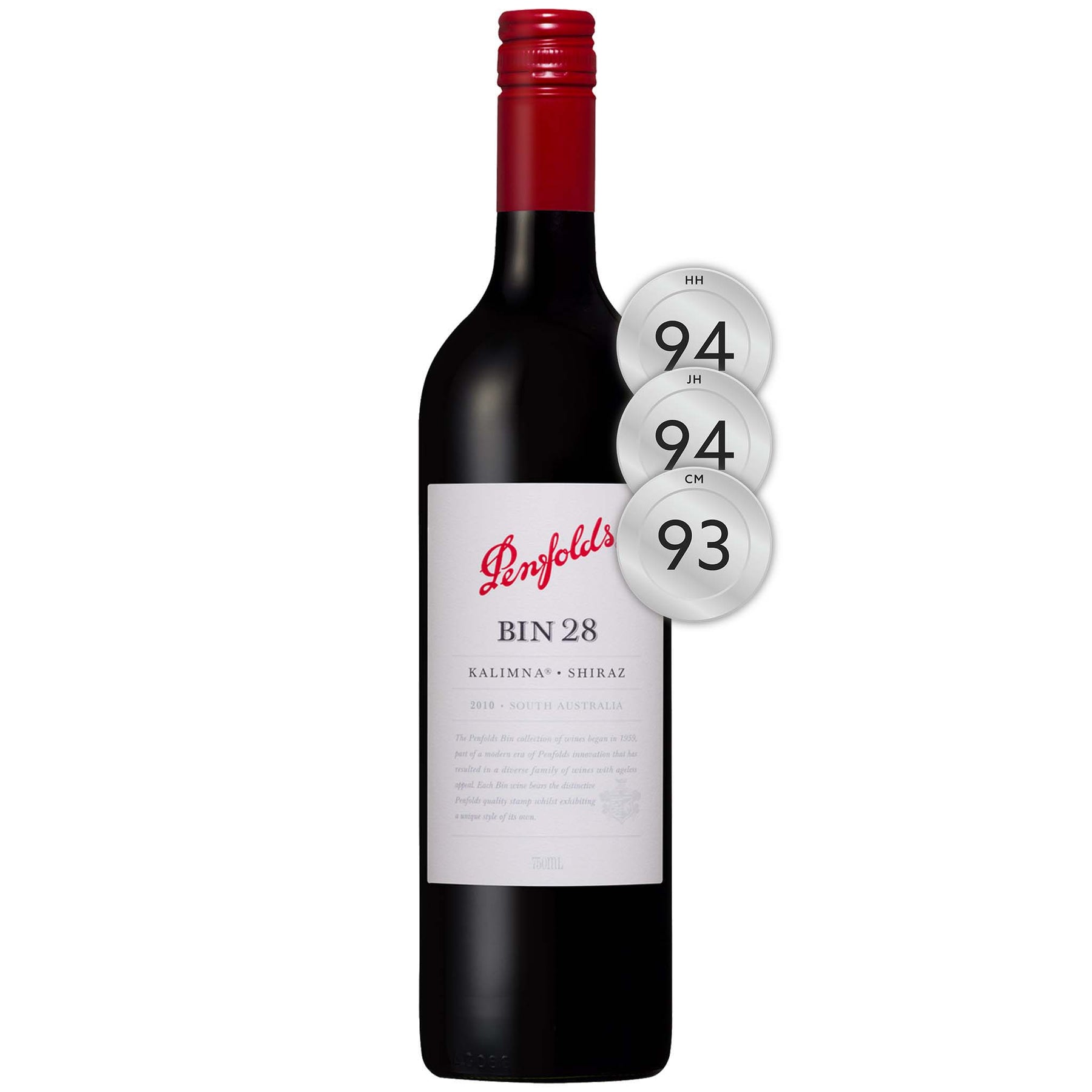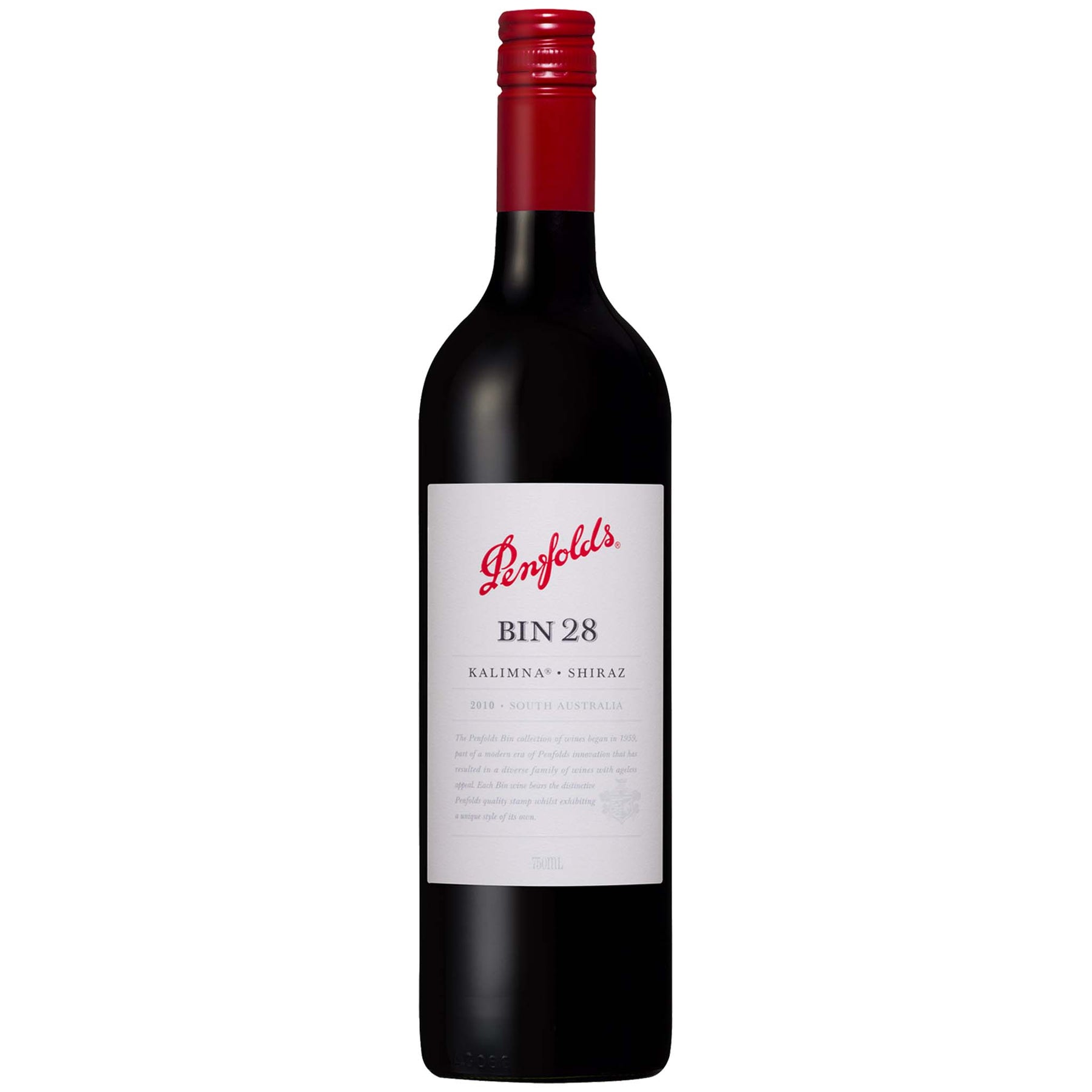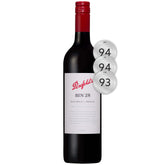

Penfolds Bin 28 Kalimna Shiraz 2006
Style: Red Wine
Variety: Shiraz
Closure: Screwcap
Penfolds Bin 28 Kalimna Shiraz 2006
Warehouse
34 Redland Drive
Vermont VIC 3133
Australia
Critic Score: 94
Alcohol: 14.5%
Size: 750 ml
Drink by: 2030
Penfolds Bin 28 Kalimna Shiraz is the archetypal warm climate Australian shiraz - ripe, robust and generously flavoured. First made in 1959, Bin 28 is named after the famous Barossa Valley Kalimna vineyard purchased by Penfolds in 1945 and from which the wine was originally sourced. Today, Kalimna Bin 28 is a multi-region, multi-vineyard blend, with the Barossa Valley always well represented.
"Dense and quite concentrated, with dark fruits, Rhone spices and especially star anise. Long finish with densely packed supple tannins." Huon Hooke
The 2006 Bin 28 Kalimna was sourced from vineyards in the Barossa Valley, Langhorne Creek and McLaren Vale. The wine was matured for 12 months in American oak hogsheads.
"Medium-deep crimson. Intense blackberry, dark cherry, black olive and roasted walnut and graphite notes. Deep-set roasted blackberry, bitumen and graphite flavours, fine gritty tannins and marked acidity. Brambly dry finish. Could come out of its shell. Drink now to 2028.
Vintage Conditions: The 2006 vintage saw good budburst and fruit set, followed by favourable growing conditions. January was hot while February was cooler, providing even ripening which was excellent for flavour and colour development. Warm, dry conditions prevailed during the harvest period. The grapes were picked at optimum maturity having excellent varietal flavour and fine tannin structure." Penfolds
Expert reviews
"In the heartland of Penfolds' red wine style; blackberry fruit, ripe tannins and vanilla oak; needs time, but everything is in balance. Drink by 2026." James Halliday, Halliday Wine Companion - 94 points
"Medium to deep red colour, with a purple edge. Dry and savoury, quite chewy tannins, dense and quite concentrated, with dark fruits, Rhone spices and especially star anise. Long finish with densely packed supple tannins. Drink: 2013-2030." Huon Hooke, The Real Review - 94 points
"It's usually such a crowd-pleasing style. It's chocolatey and rich in a medium-bodied way, with enough tannin to see it perform well over a good number of years. This release is just like that, and a bit more. It's musky, blackberried, coffeed and dry, with a good deal of drying, assertive tannin and a whiff of volatility. It has enough weight and enough flavour, and length, to see it mature handsomely. Give it some air and it performs beautifully. Excellent tannin structure. Shop around and buy up." Campbell Mattinson, The Wine Front - 93 points
After the success of early sherries and fortified wines, founders Dr Christopher and Mary Penfold planted the vine cuttings they had carried on their voyage over to Australia. In 1844 the fledging vineyard was officially established as the Penfolds wine company at Magill Estate.
As the company grew, so too did Dr Penfold's medical reputation, leaving much of the running of the winery to Mary Penfold. Early forays into Clarets and Rieslings proved increasingly popular, and on Christopher's death in 1870, Mary assumed total responsibility for the winery. Mary's reign at the helm of Penfolds saw years of determination and endeavour.
By the time Mary Penfold retired in 1884 (ceding management to her daughter, Georgina) Penfolds was producing 1/3 of all South Australia's wine. She'd set an agenda that continues today, experimenting with new methods in wine production. By Mary's death in 1896, the Penfolds legacy was well on its way to fruition. By 1907, Penfolds had become South Australia's largest winery.
In 1948, history was made again as Max Schubert became the company's first Chief Winemaker. A loyal company man and true innovator, Schubert would propel Penfolds onto the global stage with his experimentation of long-lasting wines - the creation of Penfolds Grange in the 1950s.
In 1959 (while Schubert was perfecting his Grange experiment in secret), the tradition of ‘bin wines' began. The first, a Shiraz wine with the grapes of the company's own Barossa Valley vineyards was simply named after the storage area of the cellars where it is aged. And so Kalimna Bin 28 becomes the first official Penfolds Bin number wine.
In 1960, the Penfolds board instructed Max Schubert to officially re-start production on Grange. His determination and the quality of the aged wine had won them over.
Soon, the medals began flowing and Grange quickly became one of the most revered wines around the world. In 1988 Schubert was named Decanter Magazine's Man of the Year, and on the 50th anniversary of its birth, Penfolds Grange was given a heritage listing in South Australia.
Despite great success, Penfolds never rests on its laurels. In 2012 Penfolds released its most innovative project to date - 12 handcrafted ampoules of the rare 2004 Kalimna Block Cabernet Sauvignon.
Two years later, Penfolds celebrated the 170th anniversary – having just picked up a perfect score of 100 for the 2008 Grange in two of the world's most influential wine magazines. Today, Penfolds continues to hold dear the philosophies and legends – '1844 to evermore!'.

South Australia
South Australian is responsible for more than half the production of all Australian wine. It is home to more than 900 wineries across 18 wine regions. The regions are Adelaide Hills, Adelaide Plains, Barossa Valley, Clare Valley, Coonawarra, Currency Creek, Eden Valley, Kangaroo Island, Langhorne Creek, McLaren Vale, Mount Benson, Mount Gambier, Padthaway, Riverland, Robe, Southern Fleurieu, Southern Flinders Ranges and Wrattonbully.
Many of the well-known names in the South Australian wine industry established their first vineyards in the late 1830s and early 1840s. The first vines in McLaren Vale were planted at Reynella in 1839 and Penfold's established Magill Estate on the outskirts of Adelaide in 1844.
South Australia has a vast diversity in geography and climate which allows the State to be able to produce a range of grape varieties - from cool climate Riesling in the Clare and Eden Vallies to the big, full bodied Shiraz wines of the Barossa Valley and McLaren Vale. Two of Australia's best-known wines, Penfolds Grange and Henschke Hill of Grace, are produced here. There is much to discover in South Australia for the wine lover.



